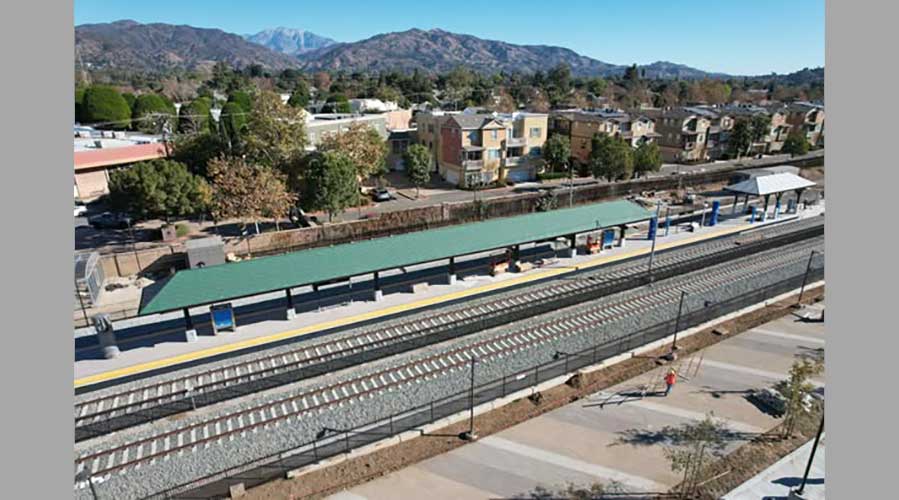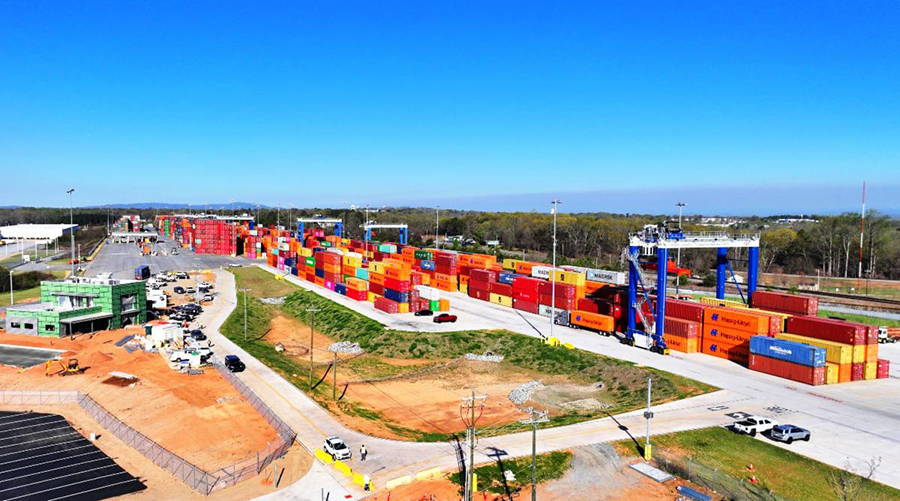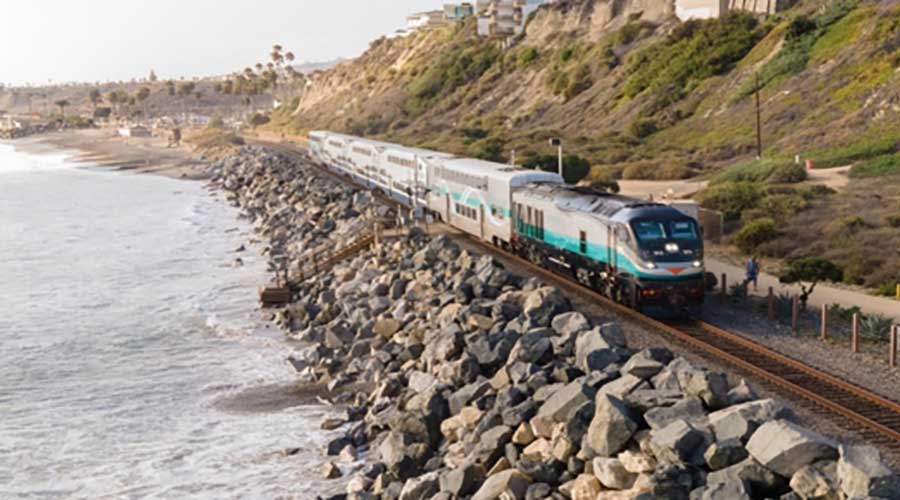Newsletter Sign Up
Stay updated on news, articles and information for the rail industry
Stay updated on news, articles and information for the rail industry
Rail News Home
Rail Industry Trends
Rail News: Rail Industry Trends
12/29/2005
Rail News: Rail Industry Trends
Class Is' slowing velocity should pick up speed in 2006, Smith Barney/Citigroup says
advertisement
With only one week left to tabulate service metrics in 2005, Canadian National Railway Co. still is the only Class I that’s increased average train speed compared with last year, according to Smith Barney/Citigroup's latest ground transportation research report. CN’s average velocity of 25.5 mph increased 3.9 percent.
The other Class Is’ average velocity through 51 weeks stood at 23.2 mph for BNSF Railway Co., down 7.4 percent; 19.3 mph for CSX Transportation, down 5.2 percent; 21.8 mph for Norfolk Southern Corp., down 4.0 percent; 22.0 mph for Canadian Pacific Railway, down 3.2 percent; and 21.2 mph for Union Pacific Railroad, down 1.7 percent compared with the same 2004 period. Kansas City Southern did not report data.
“Average train speeds have declined in recent weeks at several Class Is,” said Smith Barney/Citigroup Managing Director and Progressive Railroading columnist Scott Flower in the report. “We are not overly concerned with these seasonal trends and expect velocity to improve as operations at the rails return to normal entering 2006.”
Three Class Is also increased cars on line compared with last year. Through 51 weeks, BNSF’s cars on line rose 5.4 percent to 210,683 units; NS’, 5.2 percent to 194,594 units; and CPR’s, 4.7 percent to 86,191 units. CN’s and UP’s cars on line decreased 1.8 percent to 110,222 units and 0.9 percent to 321,161 units, respectively, while CSXT’s cars on line were flat at 233,125 units compared with 2004’s first 51 weeks.
Meanwhile, CN, CPR and UP continued to lower their average terminal dwell times. Through 51 weeks, CN’s system-wide average of 13.3 hours dropped 6.6 percent, UP’s average of 28.6 hours fell 5.6 percent and CPR’s average of 25.8 hours decreased 3.9 percent compared with the same 2004 period. NS’ average of 23.3 hours and CSXT's average of 29.5 hours increased 4.1 percent and 3.5 percent, respectively. BNSF’s average of 24.3 hours ballooned 148.7 percent, but the Class I recently began using adjusted dwell time metrics, which the Association of American Railroads modified in October.
The other Class Is’ average velocity through 51 weeks stood at 23.2 mph for BNSF Railway Co., down 7.4 percent; 19.3 mph for CSX Transportation, down 5.2 percent; 21.8 mph for Norfolk Southern Corp., down 4.0 percent; 22.0 mph for Canadian Pacific Railway, down 3.2 percent; and 21.2 mph for Union Pacific Railroad, down 1.7 percent compared with the same 2004 period. Kansas City Southern did not report data.
“Average train speeds have declined in recent weeks at several Class Is,” said Smith Barney/Citigroup Managing Director and Progressive Railroading columnist Scott Flower in the report. “We are not overly concerned with these seasonal trends and expect velocity to improve as operations at the rails return to normal entering 2006.”
Three Class Is also increased cars on line compared with last year. Through 51 weeks, BNSF’s cars on line rose 5.4 percent to 210,683 units; NS’, 5.2 percent to 194,594 units; and CPR’s, 4.7 percent to 86,191 units. CN’s and UP’s cars on line decreased 1.8 percent to 110,222 units and 0.9 percent to 321,161 units, respectively, while CSXT’s cars on line were flat at 233,125 units compared with 2004’s first 51 weeks.
Meanwhile, CN, CPR and UP continued to lower their average terminal dwell times. Through 51 weeks, CN’s system-wide average of 13.3 hours dropped 6.6 percent, UP’s average of 28.6 hours fell 5.6 percent and CPR’s average of 25.8 hours decreased 3.9 percent compared with the same 2004 period. NS’ average of 23.3 hours and CSXT's average of 29.5 hours increased 4.1 percent and 3.5 percent, respectively. BNSF’s average of 24.3 hours ballooned 148.7 percent, but the Class I recently began using adjusted dwell time metrics, which the Association of American Railroads modified in October.


 LRW Honors Amtrak’s Acheson As Railway Woman Of The Year
LRW Honors Amtrak’s Acheson As Railway Woman Of The Year
 From Editor-In-Chief Foran: Of Gender Equity And Inclusion
From Editor-In-Chief Foran: Of Gender Equity And Inclusion
 Spotlight On Some Of Today’s Rail Safety Products
Spotlight On Some Of Today’s Rail Safety Products
 Women of Influence in Rail eBook
Women of Influence in Rail eBook
 railPrime
railPrime








